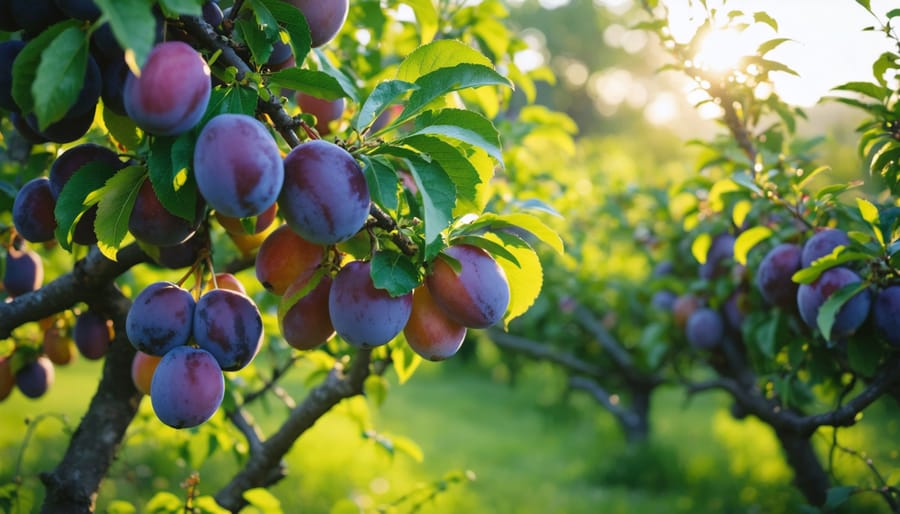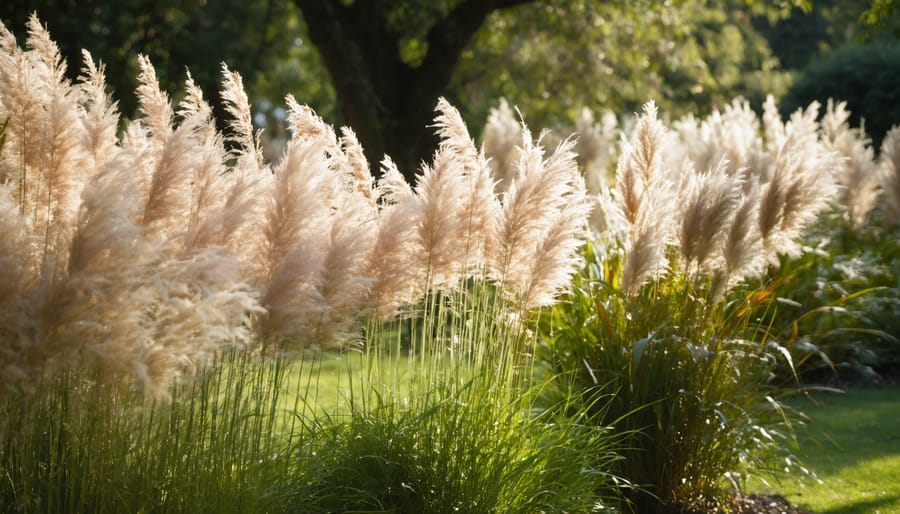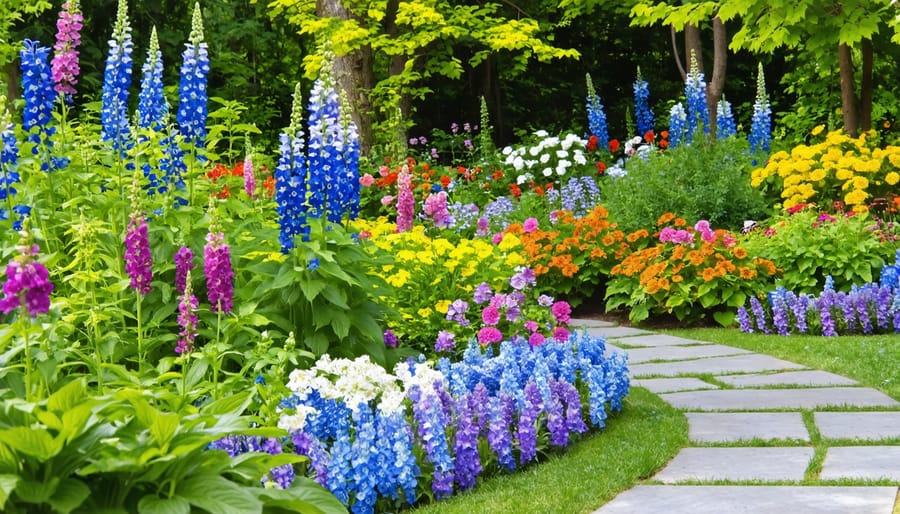Transform your indoor or outdoor space into a lush sanctuary with ornamental ferns, nature’s most elegant ornamental plants. These versatile beauties thrive in filtered light and humid conditions, making them perfect companions for both shaded gardens and bright bathrooms. Whether cascading from hanging baskets or creating dramatic ground cover, ferns offer year-round interest with their intricate fronds and fascinating growth patterns. From the classic Boston Fern to the striking Japanese Painted Fern, these timeless plants have graced gardens and homes for centuries, combining easy care with spectacular visual impact. Their ability to purify air, reduce noise, and create a calming atmosphere makes them essential elements in modern garden design and interior decorating. Master the art of fern cultivation, and discover why these prehistoric plants continue to captivate gardeners and designers alike with their graceful forms and adaptable nature.
Why Ornamental Ferns Make Perfect Garden Companions
Shade Garden Solutions
Ornamental ferns are among the most versatile plants that thrive in shade, making them perfect problem-solvers for those tricky dark corners of your garden. Their ability to flourish where other plants struggle is truly remarkable, and it’s all thanks to their natural woodland heritage.
These adaptable plants have evolved to make the most of filtered light, using their delicate fronds to capture every bit of available sunshine. Whether you’re dealing with deep shade under mature trees or the dappled light of a north-facing wall, ferns can transform these challenging spaces into lush, green havens.
The secret to their shade-loving success lies in their efficient photosynthesis process and their ability to thrive in humid, protected environments. They’re particularly effective when planted in groups, creating a natural woodland feel while helping to retain soil moisture. For best results, combine different fern varieties to create layers of texture and height, mimicking their natural habitat.
To maximize their shade-garden potential, plant them in well-draining, organic-rich soil and maintain consistent moisture. Your reward will be a vibrant, low-maintenance display that brings life to even the darkest garden spots.
Year-Round Beauty
One of the most appealing aspects of ornamental ferns is their ability to provide year-round interest in your garden. While many plants go dormant or lose their leaves in winter, several fern varieties maintain their lush, green appearance throughout all seasons. Evergreen varieties like the Holly Fern and Bird’s Nest Fern keep their fronds vibrant even during the coldest months, making them excellent choices for continuous garden structure.
As seasons change, different fern varieties offer unique displays. Spring brings the emergence of fresh, tightly coiled fiddleheads unfurling into delicate new fronds. Summer showcases mature growth in its full glory, with varieties like the Japanese Painted Fern displaying striking silver and burgundy hues. Fall introduces subtle color changes in some species, with fronds taking on golden or copper tints.
Even deciduous ferns contribute to winter interest with their persistent crown formations and dried fronds, which can catch frost and snow in striking ways. By combining both evergreen and deciduous varieties in your garden, you can create dynamic displays that evolve throughout the year while maintaining consistent green structure in your landscape.
Most Popular Ornamental Fern Varieties
Japanese Painted Ferns
Japanese Painted Ferns (Athyrium niponicum var. pictum) are among the most striking ornamental ferns, prized for their distinctive silvery-gray fronds with burgundy highlights. These eye-catching plants typically grow 18-24 inches tall and wide, making them perfect for shady borders and woodland gardens.
What makes these ferns truly special is their metallic appearance, which seems to shimmer in filtered light. The fronds emerge in spring with a pinkish tint before developing their signature silver coloring, creating a beautiful contrast against darker foliage plants.
These hardy ferns thrive in partial to full shade and prefer well-draining, humus-rich soil. While they’re relatively low-maintenance, they do appreciate consistent moisture and humidity. Adding a layer of organic mulch around the base helps retain moisture and keeps roots cool.
For best results, plant Japanese Painted Ferns where they’ll receive morning sun and afternoon shade. They’re particularly stunning when paired with dark-leaved plants like heuchera or dark-green hostas. During winter, the fronds die back, but new growth emerges reliably in spring, especially in zones 4-9.

Boston Ferns
Boston ferns are beloved for their graceful, arching fronds and make stunning additions to any hanging basket or elevated display. These classic beauties thrive in bright, indirect light and prefer consistently moist soil without becoming waterlogged. Maintain humidity levels by misting regularly or placing the pot on a tray filled with pebbles and water.
To keep your Boston fern lush and full, maintain temperatures between 60-75°F (15-24°C) and protect it from cold drafts. Feed monthly during the growing season with a balanced, water-soluble fertilizer diluted to half strength. Regular pruning of yellow or brown fronds helps maintain the plant’s attractive appearance and encourages healthy growth.
During winter, reduce watering slightly but never allow the soil to dry out completely. If you notice dropping fronds, increase humidity and check for proper light levels. Boston ferns can be divided every few years in spring to create new plants, making them an excellent value for your garden. With proper care, these timeless favorites can flourish for many years, providing that quintessential flowing greenery that makes any space feel more vibrant and alive.
Bird’s Nest Ferns
Bird’s Nest Ferns (Asplenium nidus) are among the most distinctive and eye-catching tropical ferns you can grow. Their name comes from their unique growing pattern, where fronds emerge from a central crown that resembles a bird’s nest. Unlike typical feathery ferns, these beauties feature broad, wavy-edged fronds that can grow up to 2-4 feet long, creating a dramatic focal point in any indoor or sheltered outdoor space.
These ferns are perfect for gardeners looking to add a touch of the tropics to their collection. They thrive in bright, indirect light and love humidity, making them excellent bathroom plants or additions to terrariums. The glossy, apple-green fronds emerge as tight spirals, gradually unfurling to create their characteristic nest-like formation.
Bird’s Nest Ferns are relatively easy to care for compared to other tropical ferns. They prefer consistently moist but not waterlogged soil and do well in temperatures between 60-80°F. One unique care tip: avoid watering directly into the center crown, as this can lead to rot. Instead, water around the base of the plant to keep it healthy and thriving.
Lady Ferns
Lady Ferns (Athyrium filix-femina) are among the most adaptable and graceful ferns for garden settings, making them a perfect choice for both novice and experienced gardeners. These elegant plants feature delicate, finely-cut fronds that can reach heights of 2-3 feet, creating a soft, feathery appearance in any garden space.
What makes Lady Ferns particularly appealing is their versatility. They thrive in partial to full shade and adapt well to various soil conditions, though they prefer consistently moist, well-draining soil rich in organic matter. Their natural tolerance for different growing conditions makes them excellent problem-solvers for challenging garden spots.
In spring, fresh green fronds unfurl in a mesmerizing display known as “fiddleheads,” adding dynamic interest to shade gardens. As the season progresses, the fronds develop into a lush, arching form that brings movement and texture to woodland gardens, border plantings, and container arrangements.
Lady Ferns are also remarkably hardy, surviving in USDA zones 4-8, and require minimal maintenance once established. Simply trim away old fronds in late winter to make way for new growth, and provide regular water during dry spells to keep them looking their best.
Growing Success: Care and Maintenance
Light and Location
Most ornamental ferns thrive in bright, indirect light, making them perfect for shaded patios, covered porches, or indoors near north-facing windows. While they can tolerate some morning sun, direct afternoon sunlight can scorch their delicate fronds. In nature, ferns typically grow beneath tree canopies, so try to recreate these conditions in your garden or home.
When choosing a location, look for spots with high humidity and good air circulation. Bathrooms make excellent indoor locations due to their naturally moist environment. Outdoors, plant ferns in sheltered areas where they’re protected from strong winds. Consider placing them near water features or in the shade of larger plants to maintain consistent moisture levels.
For indoor ferns, rotate the pot regularly to ensure even growth, as they’ll naturally lean toward light sources. If you notice yellowing fronds or slow growth, your fern might need more light, while crispy brown edges often indicate too much direct sun.
Soil and Water Needs
Ornamental ferns thrive in well-draining, organic-rich soil that mimics their natural forest floor habitat. Proper soil management is crucial for healthy growth. Mix your garden soil with plenty of organic matter, such as leaf mold or well-rotted compost, to create an ideal growing medium.
When it comes to watering, ferns prefer consistently moist but not waterlogged conditions. Check the soil regularly by inserting your finger about an inch deep – if it feels dry at this level, it’s time to water. During hot summer months, you might need to water more frequently, while reducing irrigation during winter dormancy.
Maintain humidity around your ferns by misting them regularly or placing their pots on water-filled pebble trays. Indoor ferns especially benefit from this extra moisture. Remember that different fern varieties may have slightly different moisture needs, so observe your plants and adjust care accordingly. Good drainage is essential to prevent root rot, so ensure your containers have adequate drainage holes.

Seasonal Care Tips
Caring for ornamental ferns requires different approaches throughout the year. In spring, gently remove any dead fronds and refresh the soil with organic compost. As new growth emerges, increase watering frequency and consider a light application of balanced, water-soluble fertilizer.
Summer calls for vigilant moisture monitoring, especially for indoor ferns. Mist frequently during hot, dry spells and maintain humidity by placing pots on water-filled pebble trays. Move outdoor ferns to shadier spots during intense afternoon heat.
As autumn approaches, reduce watering and stop fertilizing. For outdoor ferns, apply a thick layer of mulch around the base before first frost. Indoor specimens benefit from decreased watering and reduced exposure to heating vents.
Winter care focuses on maintaining moderate humidity for indoor ferns while protecting outdoor varieties with frost covers when needed. Water sparingly but don’t let the soil completely dry out. Remove any damaged fronds to prevent disease and maintain plant health.
Common Problems and Solutions
Even the most well-cared-for ferns can experience occasional issues, but most are easily resolved. Yellow or brown fronds often indicate either too much direct sunlight or insufficient water. Move affected plants to a shadier spot and adjust watering accordingly. Crispy, dry fronds typically mean the humidity is too low – try misting regularly or placing a humidity tray beneath your fern.
If you notice your fern dropping leaves, it might be experiencing temperature stress. Keep them away from drafts and maintain temperatures between 60-75°F. Brown spots on fronds could signal a fungal infection; improve air circulation and avoid overhead watering to prevent this issue.
Pest problems are relatively rare, but watch for scale insects and mealybugs. These can be treated with insecticidal soap or by wiping leaves with a cotton swab dipped in rubbing alcohol. Remember that some frond loss is natural as older leaves die off – simply trim these away to maintain your fern’s appearance.
Creative Design Ideas with Ornamental Ferns
Container Gardens
Ornamental ferns make stunning container plants, adding a touch of lush greenery to patios, porches, and indoor spaces. When creating container displays, choose pots with adequate drainage holes and use a well-draining potting mix specifically formulated for ferns. A container that’s 2-3 inches larger than the plant’s root ball provides room for growth while preventing waterlogging.
For eye-catching arrangements, consider combining different fern varieties with contrasting textures and shapes. The classic Boston fern works beautifully as a centerpiece, while smaller varieties like button ferns can accent the edges. Adding height variation creates visual interest – try placing taller ferns in elevated containers or hanging baskets.
Layer your container garden by positioning larger ferns at the back and smaller varieties in front. For optimal growth, place containers where they’ll receive filtered light and protection from strong winds. During hot summers, group containers together to create a microclimate that maintains humidity.
Remember to check soil moisture regularly, as containers dry out faster than garden beds. A layer of decorative moss on top of the soil adds both aesthetic appeal and helps retain moisture.

Landscape Integration
Ornamental ferns are versatile plants that can transform any garden space into a lush, enchanting retreat. Their graceful fronds add texture and movement, making them perfect companions in year-round garden design. Consider placing taller ferns like Lady Ferns behind shorter perennials to create natural layers, or use them to soften hardscape elements like walls and fences.
For shaded corners that often prove challenging, Boston Ferns can create stunning hanging displays, while Japanese Painted Ferns add silvery highlights to ground-level plantings. Try clustering different fern varieties with varying heights and textures to create a dynamic woodland effect, perfect for areas beneath trees or along north-facing walls.
Container gardening enthusiasts can combine ferns with flowering shade plants like impatiens or begonias for striking seasonal displays. For naturalistic gardens, integrate native fern species among existing woodland plants to create authentic-looking shade gardens that require minimal maintenance. Remember to maintain adequate spacing between plants to allow your ferns to reach their full, dramatic potential.
Ornamental ferns are truly remarkable plants that can transform any garden or indoor space into a lush, peaceful sanctuary. From the delicate maidenhair fern to the bold Boston fern, these versatile plants offer endless possibilities for creative gardening. As we’ve explored, ferns are relatively easy to care for when given the right conditions – moderate light, consistent moisture, and humid environments. Whether you’re a seasoned gardener or just starting your green journey, growing ornamental ferns can be an incredibly rewarding experience. Their timeless beauty, air-purifying qualities, and ability to thrive in challenging spaces make them perfect additions to any plant collection. Why not start your fern adventure today? With proper care and attention, these elegant plants will reward you with years of gorgeous, flowing fronds and create a serene, natural atmosphere in your space.




